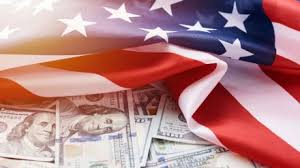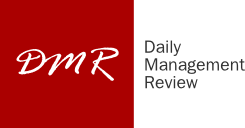
U.S. gross domestic product surged at a 3.0 percent annualized rate in the April–June period, snapping the economy out of a 0.5 percent contraction in the first quarter. The headline jump surprised many forecasters, but much of the gain came from a volatile reversal in imports rather than a broad-based pickup in domestic demand.
After businesses front‑loaded shipments in March to beat looming tariff increases, June saw imports tumble by over 4 percent, narrowing the goods trade deficit to its smallest level in nearly two years. Because imports are subtracted in the GDP calculation, this sudden pullback contributed roughly three percentage points to overall growth. Conversely, exports remained under pressure as key trading partners struggled with slower global demand, trimming nearly half a percentage point off headline GDP growth.
Economists caution that these trade dynamics—driven largely by shifting tariff expectations—can obscure the true pace of underlying activity. While policy maneuvers around steel, aluminum and Chinese goods continue to ripple through supply chains, the net‑exports swing this quarter highlights how much the headline figure depends on one‑off trade adjustments rather than sustainable expansion.
Household Spending and Labor Market Resilience
Household consumption, which accounts for more than two‑thirds of GDP, regained momentum in the second quarter. Consumer spending rose at a 1.4 percent annualized pace—up from near stagnation earlier in the year—supported by steady job gains averaging around 150,000 new positions per month and an unemployment rate hovering just above 4 percent.
Wage growth, while modest, outpaced inflation in recent months, giving many households a bit of extra purchasing power. Auto sales climbed as buyers took advantage of promotional financing, and spending on services—from travel to dining—also ticked higher. Consumer‑confidence measures, such as the Conference Board’s index, edged up for the third consecutive month, suggesting that households are increasingly willing to carry more of the growth burden even as borrowing costs remain elevated.
That said, the spending recovery is uneven. Durable‑goods outlays remain sluggish, and credit‑card delinquencies among lower‑income borrowers have inched upward. Still, as long as payrolls continue to expand and wage gains outpace price pressures, consumer resilience is likely to be the principal driver of growth in the months ahead.
Inventories, Business Investment, and Policy Outlook
Businesses slowly began to rebuild depleted inventories after running them down sharply in the early months of the year. Retail stocks rose by 0.3 percent in June and wholesale inventories by 0.2 percent, adding roughly half a percentage point to second‑quarter GDP. This restocking followed a period in which firms deliberately pared back holdings amid uncertainty over tariffs and demand.
Yet business investment in equipment and structures remained lackluster. Surveys of CEOs show many are postponing large‑scale capital projects until there is clearer guidance on both trade policy and the Federal Reserve’s interest‑rate trajectory. Elevated borrowing costs—stemming from the Fed’s current benchmark range of 4.25 percent to 4.50 percent—have made firms reluctant to pull the trigger on expansions, even as some sectors report rising order backlogs.
On the public‑spending side, federal discretionary outlays ticked up 0.6 percent, providing only a modest lift. Earlier fiscal measures—such as infrastructure grants and spending on defense—continued to flow through but lack the size to dramatically boost growth. State and local government budgets are likewise constrained by tax‐revenue shortfalls.
Looking ahead, the central bank’s policy path will be critical. With core inflation measures around 2.5 percent and the labor market still tight, most analysts expect the Fed to hold rates steady at its next meeting. A decision to pause would reflect confidence that the recent rebound is not overheating the economy; any sign of renewed price pressures—particularly in shelter or wage‑driven components—could, however, prompt further tightening.
Despite the headline strength, the U.S. economy remains dependent on a handful of volatile factors. Sustained expansion will require a pickup in business investment, a more balanced trade picture, and continued consumer resilience. How firms and policymakers respond to these mixed signals in the coming months will determine whether the second‑quarter surge marks a genuine turning point or merely a temporary uptick in a slower‑growth cycle.
(Source:www.npr.org)
After businesses front‑loaded shipments in March to beat looming tariff increases, June saw imports tumble by over 4 percent, narrowing the goods trade deficit to its smallest level in nearly two years. Because imports are subtracted in the GDP calculation, this sudden pullback contributed roughly three percentage points to overall growth. Conversely, exports remained under pressure as key trading partners struggled with slower global demand, trimming nearly half a percentage point off headline GDP growth.
Economists caution that these trade dynamics—driven largely by shifting tariff expectations—can obscure the true pace of underlying activity. While policy maneuvers around steel, aluminum and Chinese goods continue to ripple through supply chains, the net‑exports swing this quarter highlights how much the headline figure depends on one‑off trade adjustments rather than sustainable expansion.
Household Spending and Labor Market Resilience
Household consumption, which accounts for more than two‑thirds of GDP, regained momentum in the second quarter. Consumer spending rose at a 1.4 percent annualized pace—up from near stagnation earlier in the year—supported by steady job gains averaging around 150,000 new positions per month and an unemployment rate hovering just above 4 percent.
Wage growth, while modest, outpaced inflation in recent months, giving many households a bit of extra purchasing power. Auto sales climbed as buyers took advantage of promotional financing, and spending on services—from travel to dining—also ticked higher. Consumer‑confidence measures, such as the Conference Board’s index, edged up for the third consecutive month, suggesting that households are increasingly willing to carry more of the growth burden even as borrowing costs remain elevated.
That said, the spending recovery is uneven. Durable‑goods outlays remain sluggish, and credit‑card delinquencies among lower‑income borrowers have inched upward. Still, as long as payrolls continue to expand and wage gains outpace price pressures, consumer resilience is likely to be the principal driver of growth in the months ahead.
Inventories, Business Investment, and Policy Outlook
Businesses slowly began to rebuild depleted inventories after running them down sharply in the early months of the year. Retail stocks rose by 0.3 percent in June and wholesale inventories by 0.2 percent, adding roughly half a percentage point to second‑quarter GDP. This restocking followed a period in which firms deliberately pared back holdings amid uncertainty over tariffs and demand.
Yet business investment in equipment and structures remained lackluster. Surveys of CEOs show many are postponing large‑scale capital projects until there is clearer guidance on both trade policy and the Federal Reserve’s interest‑rate trajectory. Elevated borrowing costs—stemming from the Fed’s current benchmark range of 4.25 percent to 4.50 percent—have made firms reluctant to pull the trigger on expansions, even as some sectors report rising order backlogs.
On the public‑spending side, federal discretionary outlays ticked up 0.6 percent, providing only a modest lift. Earlier fiscal measures—such as infrastructure grants and spending on defense—continued to flow through but lack the size to dramatically boost growth. State and local government budgets are likewise constrained by tax‐revenue shortfalls.
Looking ahead, the central bank’s policy path will be critical. With core inflation measures around 2.5 percent and the labor market still tight, most analysts expect the Fed to hold rates steady at its next meeting. A decision to pause would reflect confidence that the recent rebound is not overheating the economy; any sign of renewed price pressures—particularly in shelter or wage‑driven components—could, however, prompt further tightening.
Despite the headline strength, the U.S. economy remains dependent on a handful of volatile factors. Sustained expansion will require a pickup in business investment, a more balanced trade picture, and continued consumer resilience. How firms and policymakers respond to these mixed signals in the coming months will determine whether the second‑quarter surge marks a genuine turning point or merely a temporary uptick in a slower‑growth cycle.
(Source:www.npr.org)





